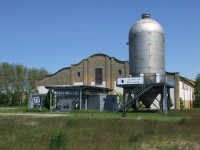Die "Exa 500" ist eine einäugige Spiegelreflexkamera für das Kleinbildformat "24 x 36". Die "EXA 500" gehört zu der "EXA" Baureihe von einfachen einäugigen Spiegelreflexkameras, die ab 1949 im Ihagee-Werk in Dresden entstanden. Gelegentlich wird die EXA als kleine Schwester der höherwertigen Exakta Baureihe bezeichnet. Dieses Modell hat eine Fresnel-Linse mit Mikroraster und hat als einzige der EXA Baureihe Verschlusszeiten bis 1/500s. Wie alle EXA Varianten besitzt sie keinen eingebauten Belichtungsmesser. Die Kamera hat oben die Prägung "Ihagee Dresden". Das verchromte Metallgehäuse ist teilweise schwarz beledert. Die Fabrikationsnummer 340040 ist nach öffnen Rückwand innen/unten zu sehen. Als Objektiv kommt ein Tessar 2,8/50 von Carl Zeiss Jena mit der Nummer 8036084 zur Anwendung. Schlitzverschluss: / 2 - / 500. Die Kamera weist Gebrauchsspuren auf.
en









